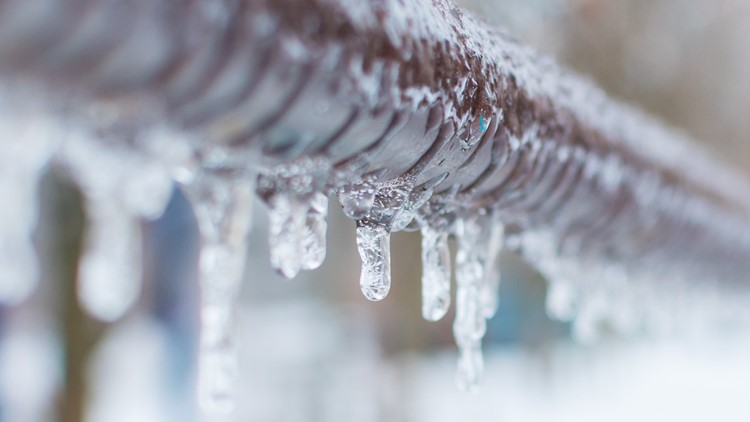Protecting Against Frozen Pipes: Best Methods for Cold Weather
Protecting Against Frozen Pipes: Best Methods for Cold Weather
Blog Article
The writer is making a few good pointers relating to How to prepare your home plumbing for winter weather in general in this article beneath.

Cold weather can wreak havoc on your pipes, specifically by freezing pipelines. Below's exactly how to avoid it from happening and what to do if it does.
Introduction
As temperature levels decrease, the threat of icy pipes rises, possibly causing pricey repair services and water damages. Understanding just how to stop frozen pipes is crucial for property owners in cool environments.
Understanding Frozen Pipes
What triggers pipelines to ice up?
Pipes freeze when subjected to temperature levels listed below 32 ° F (0 ° C) for expanded durations. As water inside the pipes freezes, it expands, putting pressure on the pipe walls and potentially creating them to rupture.
Dangers and damages
Frozen pipelines can lead to supply of water disruptions, building damages, and costly repair work. Ruptured pipes can flood homes and trigger extensive structural damages.
Signs of Frozen Water Lines
Identifying frozen pipelines early can stop them from rupturing.
Just how to identify frozen pipes
Look for decreased water flow from faucets, uncommon smells or sounds from pipelines, and noticeable frost on subjected pipes.
Prevention Tips
Insulating vulnerable pipelines
Cover pipes in insulation sleeves or use heat tape to shield them from freezing temperature levels. Focus on pipes in unheated or outside areas of the home.
Home heating strategies
Keep indoor areas appropriately heated, particularly areas with plumbing. Open cupboard doors to permit cozy air to flow around pipelines under sinks.
Protecting Outdoor Plumbing
Garden hose pipes and exterior taps
Separate and drain pipes yard tubes prior to winter months. Mount frost-proof faucets or cover exterior taps with protected caps.
What to Do If Your Pipes Freeze
Immediate actions to take
If you suspect icy pipelines, keep taps open up to eliminate pressure as the ice melts. Use a hairdryer or towels taken in hot water to thaw pipelines gradually.
Long-Term Solutions
Structural changes
Think about rerouting pipelines away from exterior wall surfaces or unheated areas. Include extra insulation to attic rooms, cellars, and crawl spaces.
Upgrading insulation
Invest in top notch insulation for pipelines, attic rooms, and wall surfaces. Correct insulation aids keep regular temperature levels and minimizes the danger of frozen pipes.
Conclusion
Preventing frozen pipes calls for aggressive procedures and quick responses. By recognizing the reasons, indications, and preventive measures, homeowners can shield their plumbing during cold weather.
6 Proven Ways to Prevent Frozen Pipes and Protect Your Home
Disconnect and Drain Garden Hoses
Before winter arrives, start by disconnecting your garden hoses and draining any remaining water. Close the shut-off valves that supply outdoor hose bibs and leave the outdoor faucet open to allow any residual water to drain. For extra protection, consider using faucet covers throughout the colder months. It’s also important to drain water from any sprinkler supply lines following the manufacturer’s directions.
Insulate Exposed Pipes
Insulating your pipes is an effective way to prevent freezing. Pipe insulation is readily available at home improvement stores and is relatively inexpensive. Pay close attention to pipes in unheated areas such as the attic, basement, crawl spaces, or garage. Apply foam insulation generously to create a buffer against the cold. You can also wrap your pipes in heat tape or thermostat-controlled heat cables for added warmth.
Seal Air Leaks
Inspect your home for any cracks or openings that could let in cold air. Seal any holes around the piping in interior or exterior walls, as well as the sill plates where your home rests on its foundation. Additionally, make sure to keep your garage door closed unless you’re entering or exiting. Leaving it open creates a significant air leak that can lead to frozen pipes.
Allow Warm Air Circulation
During cold snaps, it’s essential to allow warm air to circulate evenly throughout your home. Leave interior doors ajar to promote better airflow. Open kitchen and bathroom cabinets to help distribute heat consistently around the rooms. If you have small children or pets, be sure to remove any household chemicals or potentially harmful cleaners from open cabinets for safety.
Let Faucets Drip
A small trickle of water can make a big difference in preventing ice formation inside your pipes. When temperatures drop significantly, start a drip of water from all faucets served by exposed pipes. This continuous flow helps prevent the water from freezing. Additionally, running a few faucets slightly can relieve pressure inside the pipes, reducing the chances of a rupture if the water inside does freeze.
https://choateshvac.com/6-proven-ways-to-prevent-frozen-pipes-and-protect-your-home/

We hope you enjoyed reading our section about How to prepare your home plumbing for winter weather. Thanks a lot for taking the time to read our piece of content. Liked our entry? Please share it. Let somebody else find it. Thanks a lot for taking the time to read it.
Request A Quote Report this page